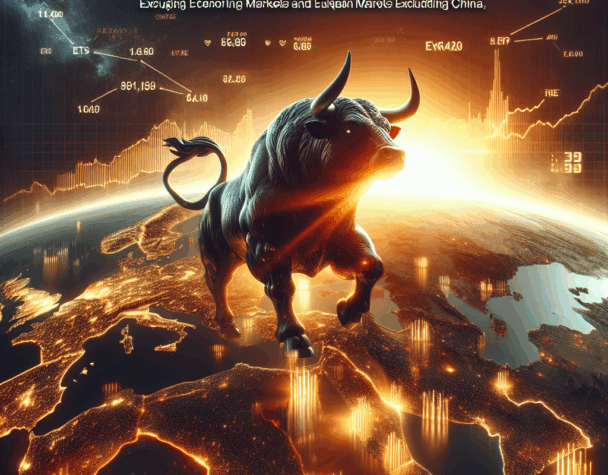
ETF Market Sees Surge in Ex-China and Defense-Focused Funds Amid Geopolitical Shifts
Wed, June 04, 2025ETF Market Sees Surge in Ex-China and Defense-Focused Funds Amid Geopolitical Shifts
The exchange-traded fund (ETF) landscape is experiencing significant transformations as asset managers respond to evolving geopolitical dynamics and investor preferences. Notably, there’s a marked increase in ETFs excluding Chinese investments and those targeting Europe’s defense sector.
Vanguard’s Emerging Markets Ex-China ETF
Vanguard Group has filed with the U.S. Securities and Exchange Commission to introduce the Vanguard Emerging Markets Ex-China ETF. This fund aims to provide investors exposure to emerging markets while deliberately omitting Chinese stocks. The initiative follows advocacy from Missouri State Treasurer Vivek Malek, who has expressed concerns over the economic, legal, and geopolitical risks associated with Chinese investments. Malek emphasized the necessity for a China-free investment option for Missouri’s $4.5 billion 529 educational savings plan, highlighting potential repercussions for Vanguard’s role if such products weren’t offered. Vanguard’s move aligns with a broader trend, as this ETF joins 12 other similar funds that have emerged since 2023, reflecting growing investor interest in managing Chinese exposure separately from broader emerging markets. The new ETF is expected to charge a competitive 0.07% fee and will predominantly feature companies from Taiwan and India, which together constitute nearly 60% of the index. (reuters.com, reuters.com)
Defense-Focused ETFs Gain Traction
In response to escalating geopolitical tensions and increased defense spending by European nations, major asset managers like BlackRock and BNP Paribas have launched ETFs centered on Europe’s defense industry. These funds aim to capitalize on the continent’s rearmament efforts, spurred in part by calls for Europe to reduce reliance on American military support. Over the past seven months, at least nine Europe-focused defense ETFs have been introduced, contributing to a market that now boasts over 50 defense ETFs globally. In 2025 alone, investors have funneled $8.4 billion into defense ETFs, with $2.7 billion directed toward European-focused variants—more than double the total investment for all of 2024. BlackRock’s new ETF is listed in Amsterdam and Frankfurt, while BNP Paribas’ ETF is available in Paris and will soon be listed elsewhere in Europe. These funds typically include companies within European NATO member states. The surge in defense stock values has encouraged more money managers to enter this space, including firms like Allianz and UBS, which have relaxed previous restrictions on defense investments. (reuters.com)
Spotlight on Actively Managed ETFs
The ETF industry is also witnessing a surge in actively managed funds. Capital Group, the world’s largest active asset manager, has entered the active ETF model portfolio market with eight portfolios composed entirely of its own active ETFs. This move caters to financial advisers seeking pre-constructed model portfolios that align with specific risk levels or investment goals. Capital Group’s new offerings leverage their 22 ETFs, which have amassed $53 billion in assets. By utilizing ETFs, advisers benefit from lower fees and increased tax efficiency compared to mutual funds. The model portfolio market, valued at $2 trillion in the U.S., is traditionally dominated by broker-dealers but is seeing a shift towards asset manager and third-party operated portfolios. (ft.com)
However, the rise of actively managed ETFs has not been without controversy. A significant number of investment managers face criticism for promoting ETFs as actively managed while closely mirroring benchmark indices—a practice termed “shy active” by Morningstar. A survey by the Carne Group revealed that 88% of wealth managers and institutional investors believe these ETFs fail to meet their active management claims. Transparency concerns, especially due to European regulations mandating daily portfolio disclosures, have impeded the launch of genuinely active ETFs, as managers fear revealing proprietary trades. New semi-transparent structures introduced in Luxembourg and Ireland are expected to encourage truly active fund strategies by protecting trade confidentiality. (ft.com)
Market Outlook
Despite a record $1.1 trillion in inflows into U.S. ETFs in 2024, nearly doubling the previous year’s $597 billion, the industry could face challenges in 2025. Analysts attribute the growth to a bullish market, innovative products, and investor preference for low-cost, high-liquidity ETFs. However, potential obstacles include market saturation and the difficulty of attracting investors to complex products. A record number of ETF closures is anticipated, surpassing the 186 liquidations in 2024. Nevertheless, the sector remains optimistic, having reached $14 trillion in global assets by the end of 2024, with a significant increase in new ETF launches, including products based on bitcoin and risk management strategies. (reuters.com)
In summary, the ETF market is rapidly evolving, with asset managers introducing innovative products to meet changing investor demands and geopolitical realities. The rise of ex-China and defense-focused ETFs, alongside the growth of actively managed funds, underscores the industry’s adaptability and responsiveness to global trends.

